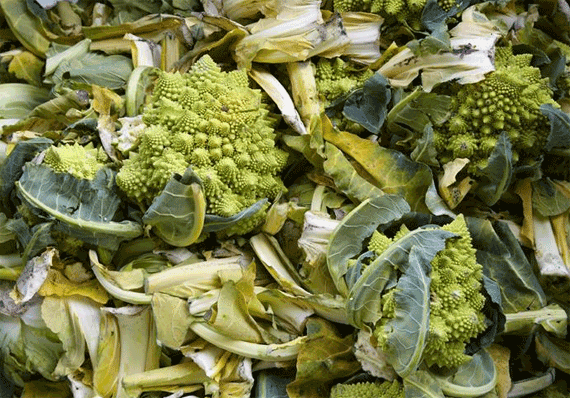



Research into the Use of Vegetable By-products for Animal Feed
AZTI-Tecnalia has successfully completed the second of three phases of research to characterise by-products as set out in the Clean Feed project in Spain.It aims to use the vegetable by-products that are generated in the distribution sector and in the production and transformation processes of the foodstuffs industry, and incorporate them into animal feed. The function of the R& centre is to characterise and classify the by-products that have the best characteristics so that they can be used for animal consumption. Also participating in the project alongside AZTI-Tecnalia are the Government of the Basque Autonomous Community (region), the Basque Foundation for Food Safety Elika, and Tecnalia’s Industrial Systems Unit.
Clean Feed, funded by the European Union’s Life+ Programme and co-funded by the Directorate for Food Innovation and Industry and the Directorate for Environmental Quality of the Government of the Basque Autonomous Community, is crucially important in the aim to prevent biodegradable products ending up in rubbish dumps. In the BAC-Basque Autonomous Community, about three-quarters of the more than 25,000 tonnes of vegetable products and by-products generated ends up in the rubbish tips. To contribute towards mitigating this situation, AZTI-Tecnalia is working to characterise the various vegetable fractions produced in the BAC by drawing up a ‘generation inventory’, and carrying out sampling and laboratory analyses. All this is designed to see whether the various vegetable by-products are suitable for incorporation into animal feed.
The various sectors of the Foodstuffs Industry that generate vegetable by-products are as follows: potato (29.6 per cent), wine (27.7 per cent), distribution (16.6 per cent), cider (13.8 per cent), bread (11.3 per cent), fruit and vegetable (0.8 per cent) and coffee (0.1 per cent). AZTI-Tecnalia has exhaustively gathered information from these sectors in terms of the quantities, generation characteristics and current management of their by-products.

Sampling and Laboratory Analysis Process
This expert R&D centre in marine and foodstuffs research has specified three phases of sampling – spring, summer/autumn and winter – in order to take into consideration seasonality in the type of the vegetable by-products of each sector. It has also designed a sampling protocol and has selected the most relevant companies in each sector to ensure that the samples obtained are as representative as possible.
The samples are processed to be sent to the R&D centre's laboratories. The analysis parameters have been selected in order to evaluate whether the samples are suitable for incorporation into animal feeds. The samples are required to meet nutritional, market and legislative requirements established for animal feed.
The results of the analyses in the first phase of the sampling, which have yet to be confirmed by the analyses in the other two phases, highlight the high level of moisture (in excess of 80 per cent), low values of protein and fat (less than one per cent in both cases) as well as about five per cent total sugars and one to two per cent total fibre. As regards the presence of undesirable substances, no abnormal values have been highlighted.
Apart from the analytical studies, the Clean Feed project aims to provide a technical solution for these by-products and carry out a full-scale pilot experience that will allow it to be validated and fine-tuned. The aim is to develop an effective, viable plan of action for the handling, processing, management and monitoring of the vegetable fractions for their use in animal feed.
Cutting the Amounts Reaching Rubbish Dumps
Approximately three-quarters of the over 25,000 tonnes of fruit and vegetable matter that is not marketed plus other vegetable by-products is going to find its way to the Basque Country’s rubbish tips where it is managed as waste. In the case of fruit and vegetables, these are products that are not marketed for market criteria reasons (poor appearance, unattractive shape, close to their best-before dates, etc.); in the case of by-products, they have their origins in the production and transformation processes of the foodstuffs industry.
Current policies on waste are based on the cutting of the biodegradable waste sent to rubbish tips. A European Union directive and the Second Environmental Framework Plan for the BAC indicate that by 2012 the aim is to cut the biodegradable waste that ends up in rubbish tips by 50 per cent. Likewise, the draft of the 3rd Environmental Framework Plan for the BAC 2011-2014 aims to increase the proportion of upgraded non-hazardous waste by five per cent and promote the safe substituting of raw materials by means of by-products and waste through the development of standards and technical regulations.
January 2012






